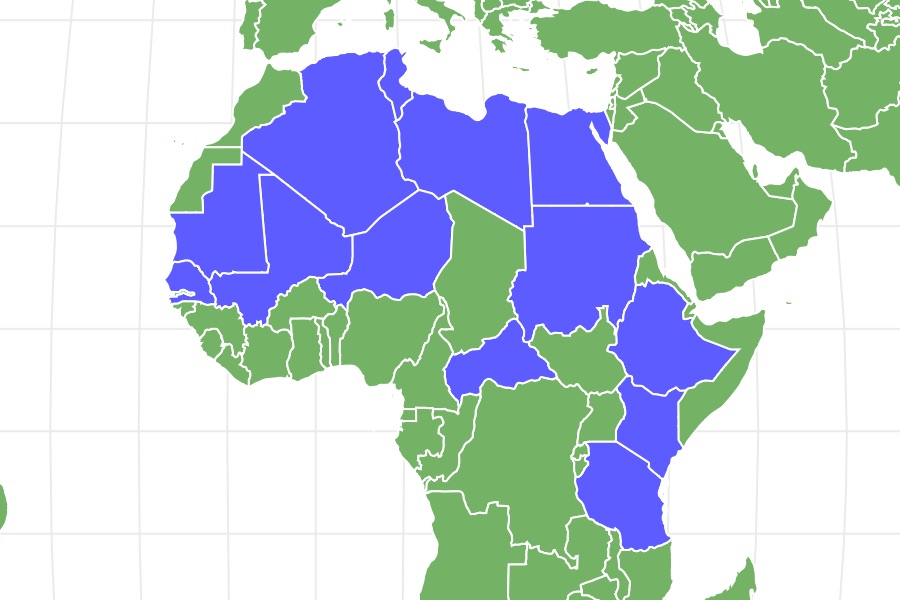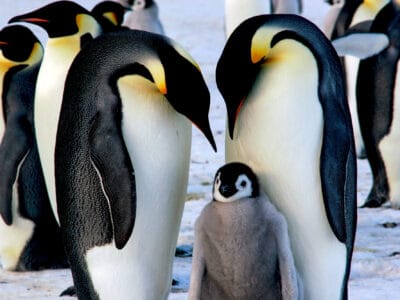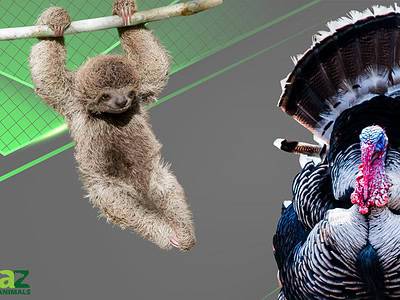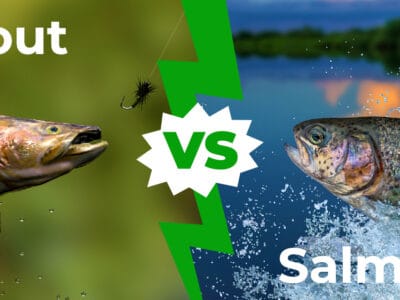Egyptian Cobra (Egyptian Asp)
Naja haje
The Egyptian cobra is one of the largest cobras in Africa.
Advertisement
Egyptian Cobra (Egyptian Asp) Scientific Classification
- Kingdom
- Animalia
- Phylum
- Chordata
- Class
- Reptilia
- Order
- squamata
- Family
- Elapidae
- Genus
- Naja
- Scientific Name
- Naja haje
Read our Complete Guide to Classification of Animals.
Egyptian Cobra (Egyptian Asp) Conservation Status
Egyptian Cobra (Egyptian Asp) Facts
- Prey
- Toads, small mammals, birds, eggs, lizards, other snakes
- Fun Fact
- The Egyptian cobra is one of the largest cobras in Africa.
- Diet for this Fish
- Carnivore
View all of the Egyptian Cobra (Egyptian Asp) images!
The Egyptian cobra is also known as the Egyptian Asp, the snouted cobra or the banded Egyptian cobra.
The Egyptian cobra (asp) is massive, taking up about 8 feet in length along their heavy body. The only cobra that exceeds its size in the entire African continent is the forest cobra. With over 30 hatchlings per clutch, the IUCN isn’t concerned about conservation at all. Though quite shy, this cobra will chase down threats, striking with incredible toxic venom if necessary.
Amazing Facts
- The Egyptian cobra is oviparous, and she lays up to 33 eggs per clutch.
- This cobra has the second-largest size of every cobra in Africa, only outmatched by the forest cobra.
- Distribution of the Egyptian cobra is minimal, primarily placing it in Africa.
- Despite their large size, they are incredibly quick, moving swiftly to chase victims or hunt.
- The primary diet of the Egyptian cobra consists of toads.
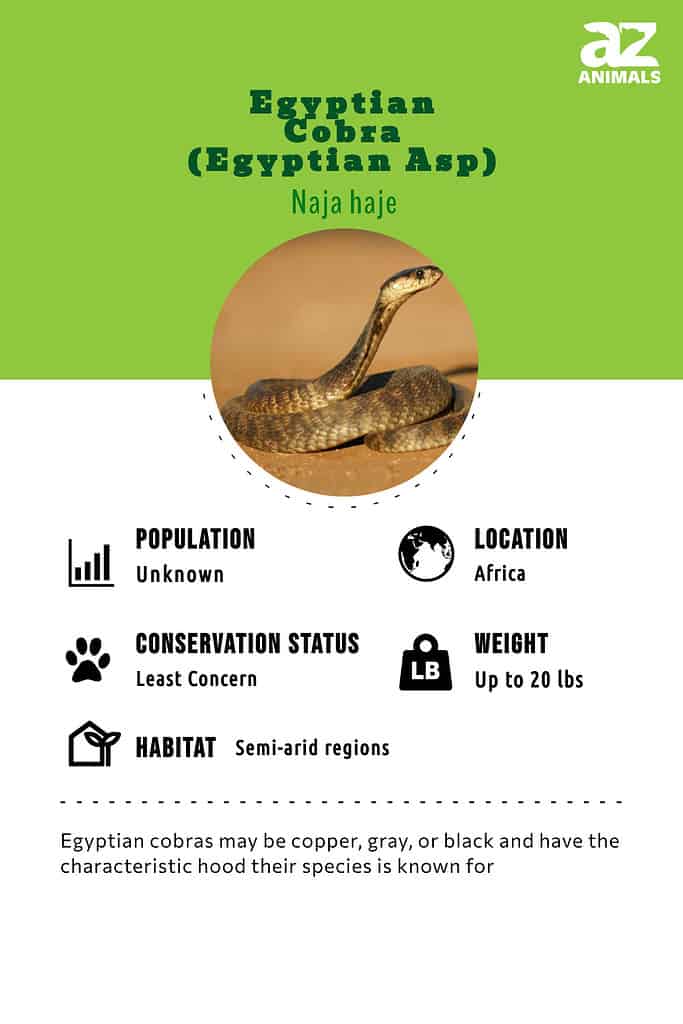
Where to Find the Egyptian Cobra
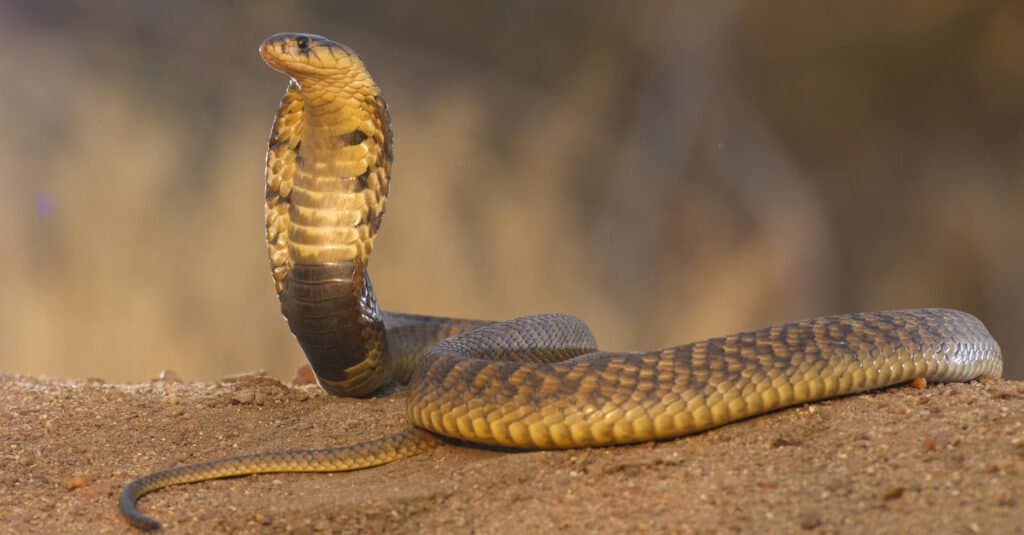
Egyptian cobras can be found in central, eastern, and northern Africa
©Stu Porter/Shutterstock.com
The primary distribution of the Egyptian cobra is in Africa. They are found in the northern region of the continent, as well as in Kenya, Uganda, and Tanzania in the east. It is also found in central Africa, thriving in areas similar to the desert, which are, however, not considered true deserts.
Preferably, these cobras find dry savannas, arid grasslands, coastal plains, scrubland, and similar climates to live in. They don’t ordinarily migrate.
Scientific Name
The Egyptian cobra, which is sometimes called the snouted cobra or the banded Egyptian cobra, has the scientific name of Naja haje. This name, which is from Sanskrit, contains two different words which both mean snake. It is from the Reptilia class and the Elapidae family.
Population & Conservation Status
While the exact population is unknown, the IUCN considers the Egyptian cobra to be Least Concern, in terms of conservation. The population is stable, though little is known about their growth.
Appearance and Description
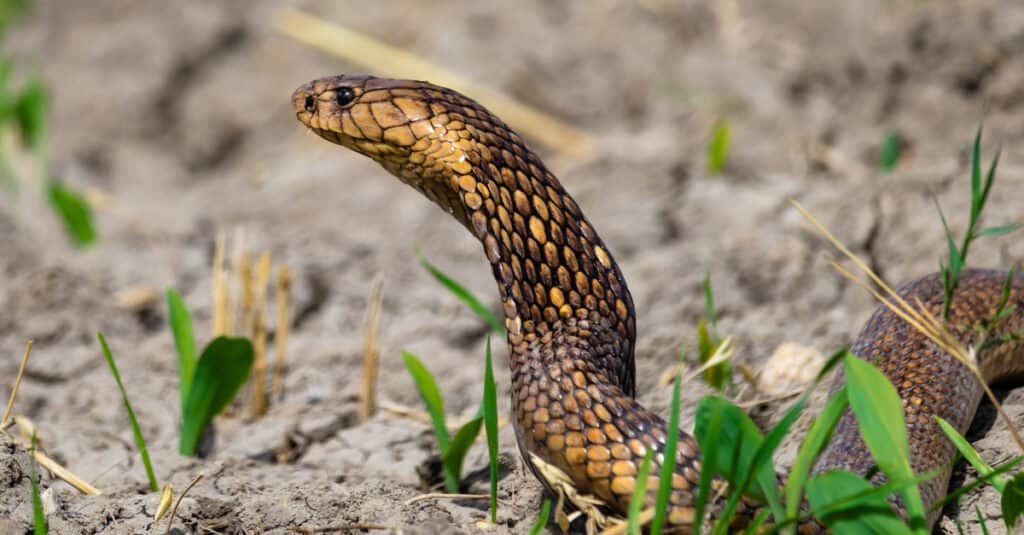
Egyptian cobras may be black, grey, or copper and are capable of growing to eight feet
©Mohammed younos/Shutterstock.com
The average size of the Egyptian cobra is 8 feet, making it the second-largest cobra in all of Africa. The only cobra that is bigger than that in the continent is the forest cobra, which can measure nearly 9 feet long. It is a broad-snouted cobra with a large, depressed head. The long ribs help to form the trademark hood of the cobra.
While the color of this cobra has quite a range, it is often a shake of brown, banded with either a lighter or darker mottling. Just below the eye, you’ll even see a tear-drop mark. The total color depends on where it lives since some of these cobras are fully black while others have a copper or grey hue. Along the sides, dark spots decorate the white, dark brown, blue-grey, yellow-brown, or black hue.
How to identify an Egyptian cobra:
- Typically, brown with spots along the sides and a banded pattern
- Up to 8 feet long.
- Broad-snouted head with wide hood down the neck.
Evolution
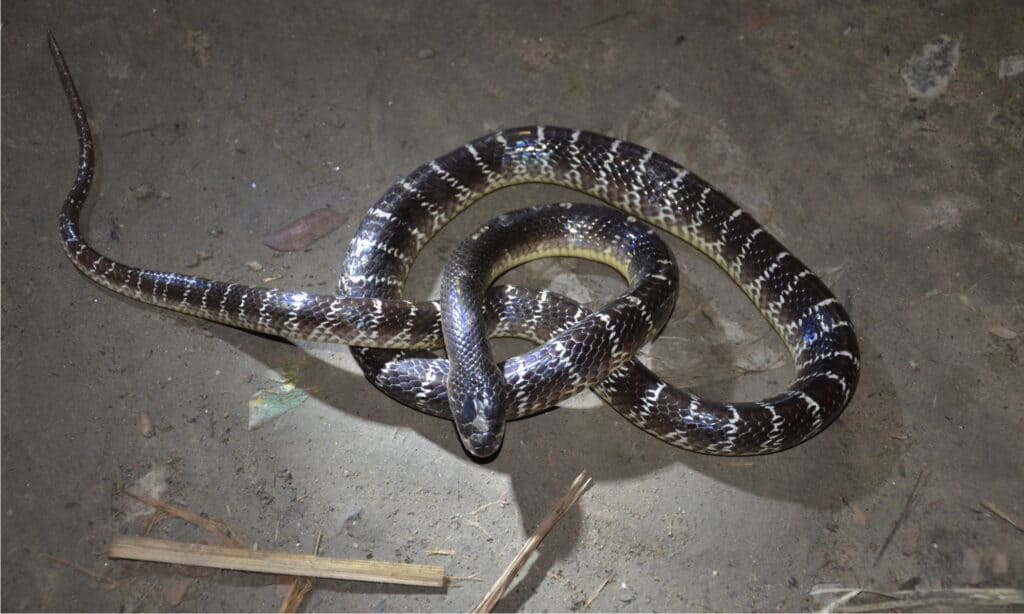
African cobras are related to several other snake species including the common krait
©Arabindu Sardar/Shutterstock.com
As a member of the Elapidae, the Egyptian cobra is part of a vast family spread out over Africa, the Americas, Asia, Australia, and even the Indian and Pacific Oceans. The family itself consists of 360 species grouped in 55 genera.
As a member of the genus Naja, the Egyptian Cobra is considered a true cobra and a close cousin of the Indian Cobra (Naja naja) and the Caspian Cobra (Naja oxiana). It is also related to the following:
Coral snakes: Also known as the Calliophiinae and the Micrurinae, they include the black coral snake and the banded Malaysian coral snake.
Kraits: Also known as the Bungarinae, they are found in Asia and include the Banded Krait and the Common Krait.
African Garter Snakes: Also known as the Elapsoidea, they are no relation to the North American garter snake. As a matter of fact, they are actually venomous, unlike the latter which is nonvenomous. Examples include the Angolan and Somali garter snakes.
Sea snakes: These snakes are mostly venomous but are aquatic and unsuited to life on land. They belong to the genus Hydrophiinae which includes yellow sea snakes which are the largest of them all. The genus also includes brown snakes, taipans, and tiger snakes.
Venom: How Dangerous Are They?

©Julian W/Shutterstock.com
The venom of the Egyptian Cobra is highly toxic and dangerous to every person or animal that it touches. They release this venom through a bite, which is highly toxic. The venom is a combination of cytotoxins and neurotoxins that could even kill an elephant within three hours. They release anywhere from 175 to 30 mg of the toxins.
If you are bitten, the best thing you can do is call emergency services immediately. They should also remove any rings, bracelets, or other tight accessories from the part of the body that was bitten to avoid swelling.
Behavior and Humans
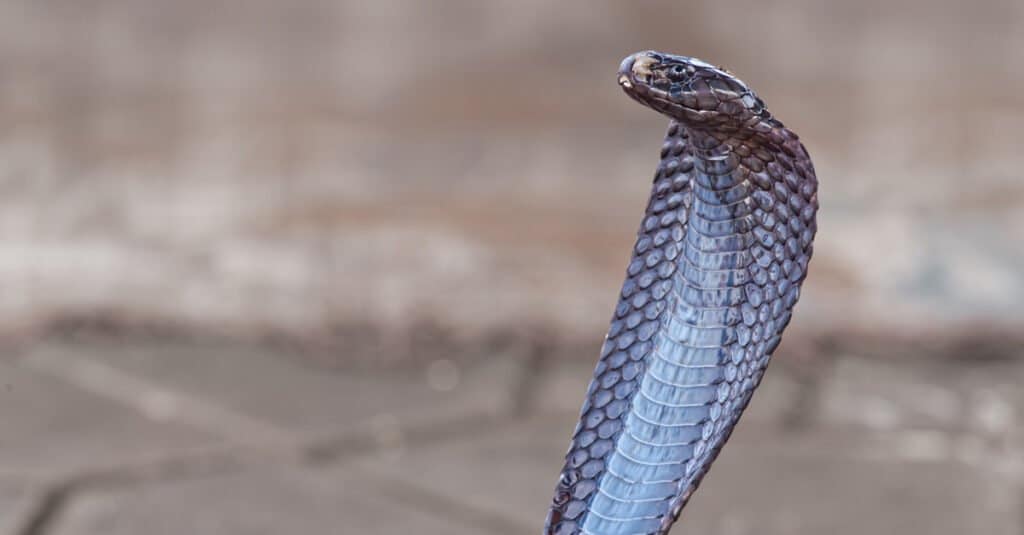
The Egyptian cobra is elusive but highly defensive when encountered
©OPIS Zagreb/Shutterstock.com
Egyptian cobras are fairly shy, so it is unlikely that you’ll randomly stumble upon one unless you’re on their turf. Still, if you find yourself in the presence of one, be careful; they are highly defensive. They will consume small mammals as part of their regular diet, but the death time associated with a human bite takes a mere 15 minutes to kill them.
Similar Animals
View all 118 animals that start with EEgyptian Cobra (Egyptian Asp) FAQs (Frequently Asked Questions)
Are Egyptian cobra snakes venomous?
Yes. Their venom is highly toxic, and it only takes about 15 minutes for their bite to kill a human.
How do Egyptian cobra snakes hunt?
This snake primarily finds it food through foraging. If necessary, they’ll go into areas with humans to get their prey, even though they are shy. If they are encountered by a threat, they’ll try to escape initially, but they’ll also attack first if threatened.
Where do Egyptian cobra snakes live?
The primary distribution of this cobra is in Africa.
What do Egyptian cobras eat?
Primarily, the diet of this cobra is made of toads, but they aren’t particular. They’ll eat anything from small mammals to birds to lizards. It will even eat the eggs of any of these animals.
What is an Egyptian cobra called?
The scientific name of the Egyptian cobra is Naja haje. “Haje” comes from the Arabic word “hayya,” which means snake. They may also be known as the snouted cobra or the banded Egyptian cobra.
How deadly is the Egyptian cobra?
Found primarily in North Africa, the Egyptian cobra’s bite is extremely deadly. With the release of its venom, an adult elephant could die within three hours. The average death time for humans is just 15 minutes. As the venom makes its way through the body, it causes paralysis and destruction of nerve tissue, essentially making the cause of death respiratory failure.
Are Egyptian cobras aggressive?
Yes. It is one of the most dangerous species found in Africa, though it is extremely shy.
How fast can an Egyptian Cobra kill a human?
Humans are no match for the Egyptian cobra’s venom. Typically, the death time is just 15 minutes after the initial bite.
Thank you for reading! Have some feedback for us? Contact the AZ Animals editorial team.

